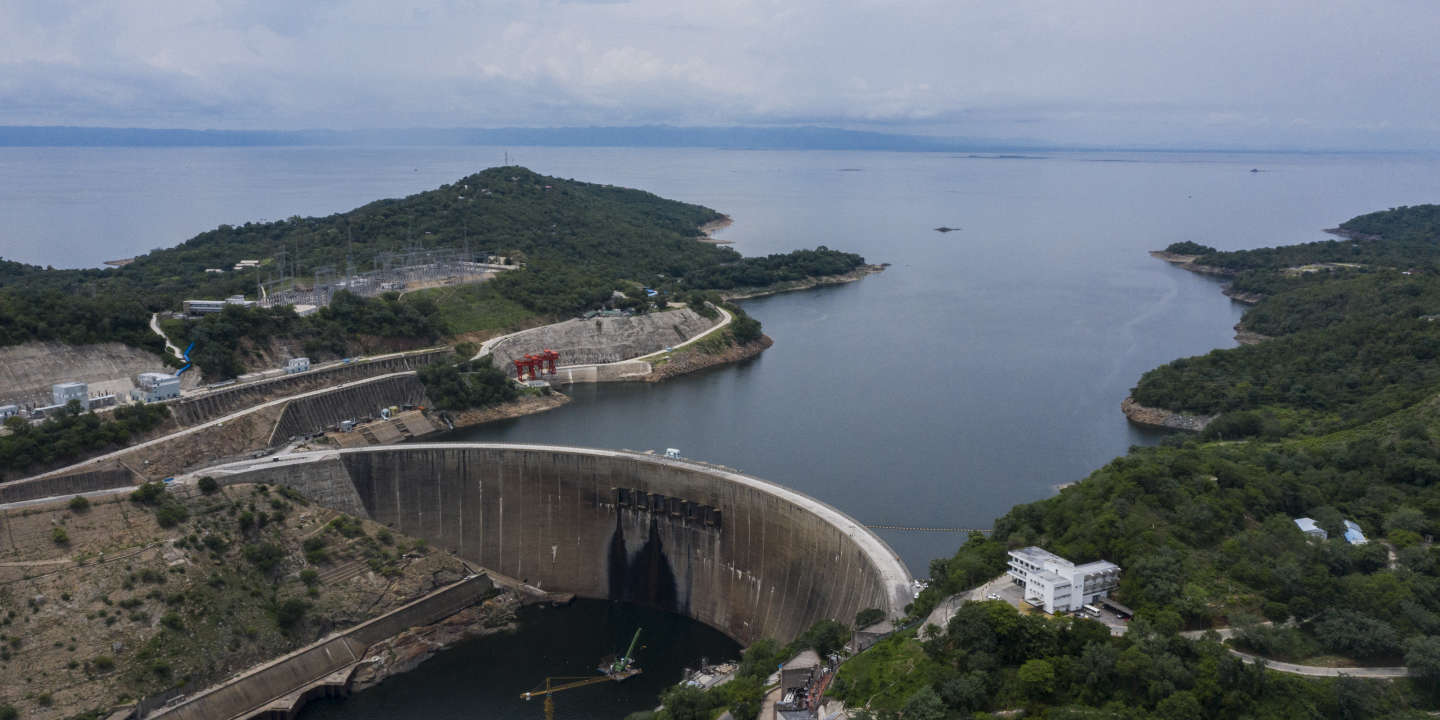In the late 1950s, a huge concrete dam was erected on the turbulent waters of the Zambezi River on the border of Zimbabwe and Zambia. The Kariba Dam, with a total capacity of about 2,000 megawatts (MW), is still today one of the largest hydroelectric power plants in Africa, single-handedly providing 70% of the electricity consumed in Zimbabwe. But its gigantic reservoir is only 3% full due to repeated droughts.
“With no other choice,” Harare has been imposing massive power cuts for up to 19 hours a day since the beginning of December in a country already in the grip of a staggering economic crisis. Residents of the capital told Agence France-Presse that they were getting up in the middle of the night to take advantage of the few hours of electricity available to charge their phones or iron a shirt. On the other side of the river, Zambia, which gets power from Kariba as well, has also announced power cuts.
Further north, in Tanzania, low water levels in the dams, coupled with maintenance problems, have led the authorities to take the same drastic decisions. “At the moment, they are cutting the power between six and eight hours a day, sometimes twelve,” said Aviti Thadei Mushi, a professor in the Department of Electrical Engineering at the University of Dar es Salaam.
The cheapest resource
The capital, which is not normally affected by “rationing,” has been hit particularly hard, said Mr. Mushi, who is sometimes unable to teach his classes in lecture halls without electricity. “In people’s homes, if the fridge has no electricity for eight hours, all that food goes into the garbage. People complain a lot.” More broadly, the entire economy is affected. “Take the barber who runs a small salon on the street. Without electricity, he can’t do anything,” said Mr. Mushi.
“Several recent scientific studies have shown that the fluctuation between extremely wet and extremely dry years will increase across East Africa.”
David Mwangi, a Kenyan expert who has worked for Power Africa, an electricity access program, pointed out that such blackouts have a heavy impact on industry. Although large factories are equipped with generators, they consume a lot of diesel. Using generators for prolonged periods of time is much more expensive than using electricity from the grid, which makes production costs skyrocket. “The smallest industries, which may not have generators, will have to stop production or reduce the number of hours they work,” he said.
Many countries in Eastern and Southern Africa are highly dependent on hydropower, which can sometimes make up more than 90% of a country’s electricity, as it does in Ethiopia or Lesotho. These countries have taken advantage of large rivers and rugged topography, especially the Great Rift Valley, and rely on this constant and dependable energy source. “Historically, it has been the cheapest energy resource, so it has been very attractive for countries in the region,” said Sebastian Sterl, an energy expert based in Addis Ababa for the World Resources Institute, an environmental think tank.
But global warming and its recurring droughts are destabilizing this system. “Several recent scientific studies have shown that the fluctuation between extremely wet and extremely dry years will increase across East Africa,” he said, adding, however, that this prediction is less “clear” in other African regions. Mr. Sterl is a strong advocate for a diversification of energy sources, “so that something else can take the helm if hydro proves unavailable.”
This is the case in Kenya, where hydropower now accounts for only about 30% of installed capacity, thanks in particular to the massive rise in geothermal power. Water levels in Kenya are currently low, but the East African economic powerhouse is not suffering from drought-related blackouts for the moment, even though droughts this intense have not been seen for forty years. “We have optimized the use of dams by reducing their use and increasing the use of geothermal energy so that Kenyans are not affected,” said a spokesperson for KenGen, the national electricity company. Even the country’s few – and expensive – oil-run power plants are not currently being used very much, he said, which avoids an increase in the electricity bill at a time of record inflation.
National pride
According to Mr. Sterl, the consequences of global warming do not necessarily herald the end of hydropower in the region. First of all, some areas such as Uganda or the eastern part of the Democratic Republic of Congo (DRC) remain very wet. Elsewhere, dams are used to complement other energy sources, particularly renewable energy: in Ethiopia, sunshine and wind are at their peak during the dry season when hydropower is at its lowest, and vice versa during the rainy season.
We are interested in your experience using the site.
Ethiopia is also completing the Renaissance megadam, which will be the largest dam in Africa, after years of herculean work on the Nile. The completed venture, a source of national pride amidst strong tensions with neighbors Sudan and Egypt, is supposed to exceed 5,000 MW, the equivalent of at least five standard nuclear reactors. The project of filling its huge reservoir, which has already begun, will take two to three years, noted Mr. Sterl – “depending on the rainfall.”


